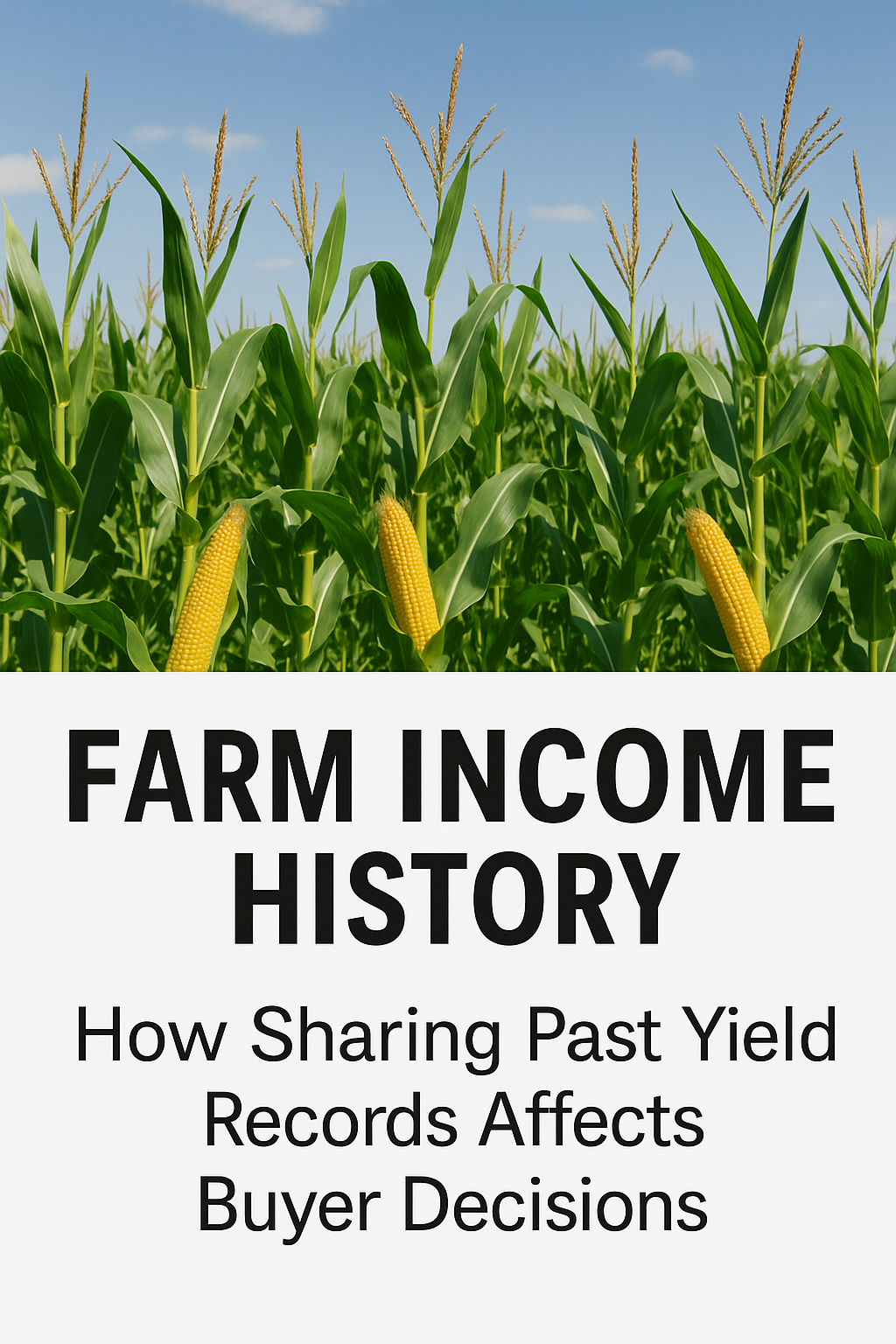When it comes to selling farmland in Iowa and across the Midwest, one of the most influential factors in a buyer’s decision is farm income history. Buyers want to know not just the number of acres or CSR2 score, but how the farm has actually performed over time. Sharing past yield records—corn, soybeans, or other crops—can make a property far more attractive, build trust, and often lead to stronger bids on auction day. At Whitaker Marketing Group, we’ve seen firsthand how providing clear, accurate, and well-documented yield history can influence the sale price and overall confidence buyers place in a piece of land. Let’s break down why these records matter and how they shape buyer behavior.
Why Farm Income History Matters
Farmland is an investment. Whether purchased by farmers expanding their operation or by investors seeking a stable asset, buyers want predictability. Yield history provides that.
-Benchmarking Performance: Yield data allows buyers to compare the farm against county and state averages published by trusted sources like the USDA’s National Agricultural Statistics Service (NASS) and Iowa State University’s Extension and Outreach (ISU Extension).
Risk Reduction: Historical records reassure buyers that the land has consistently produced, even in challenging years.
Income Forecasting: Past yield trends help buyers project rental income or operational returns, making financial modeling more accurate.
The Power of Transparency
In our experience, sellers who provide five to ten years of yield records give buyers the confidence they need to bid competitively. Transparency builds trust. If a farm has had consistently strong yields relative to county averages, it showcases the property’s potential beyond soil ratings. Even if yields are average, accurate records can still help. Buyers prefer verified information over uncertainty. When data is missing, buyers often assume risk and bid conservatively.
External Factors Buyers Consider Alongside Yields
While yield records are valuable, buyers also weigh other data points:
-Soil Productivity: CSR2 scores in Iowa are still an essential benchmark.
-Management Practices: No-till adoption, cover crops, or tiling can enhance both yields and sustainability.
-Market Conditions: Corn and soybean price trends from sources like USDA’s Economic Research Service impact how yield history translates into projected income.
-Government Programs: Participation in CRP, CSP, or EQIP can also influence income history and long-term value.
By pairing yield data with these broader factors, sellers present a complete picture of farm potential.
Practical Tips for Sellers
1. Gather Yield Maps & Records – Pull together FSA reports, precision ag data, or hand-written yield logs. Buyers want credibility.
2. Compare to County Averages – Highlight years when yields were above the county norm. Use resources like USDA Quick Stats.
3. Show Consistency – Buyers are more interested in steady, reliable performance than one exceptional year.
4. Present Professionally – At Whitaker Marketing Group, we integrate yield data into auction booklets and marketing materials so buyers see it clearly and early in the process.
Final Thoughts
Sharing past yield records can be the difference between a good auction and a great auction. Buyers are increasingly data-driven, and farmland sales that include a transparent income history give them the confidence to compete. At Whitaker Marketing Group, our mission is to maximize results for farmland sellers. If you’re considering selling, start organizing your yield history now—it could add measurable value to your land.
515-996-5263 |✉️info@wmgauction.com